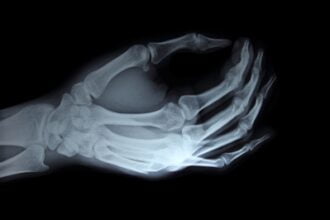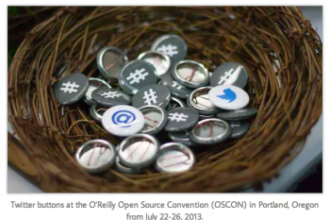Cost Transparency Brings Patient Engagement
With 32 million uninsured Americans, the Affordable Care Act has been the catalyst of expanding coverage for all Americans.
Cost Transparency Brings Patient Engagement
With 32 million uninsured Americans, the Affordable Care Act has been the catalyst of expanding coverage for all Americans.
From an entrepreneurial perspective, opportunity in this space is unbelievable. With the increasing patient-loads, healthcare providers will have to find innovative ways to manage patients and the associated costs. How will we take care of this sudden influx of patients?
Providers are struggling to demonstrate that they are implementing Meaningful Use Stage 2. This involves demonstrating that we are engaging patients.
The induction of healthcare reform brings new attitudes towards healthcare on the part of the patient. Consumers now have a greater need for and are entitled to greater transparency.
Let’s have a look at a few examples of how applications address these challenges and how it affects patients and healthcare providers: I will be using the terms patient engagement and consumer engagement interchangeably.
Mobile Paperless Billing: Simplee
This is a financial management tool that simplifies the billing process. We all know billing is a huge headache and I like this because it solves a real problem. It just fits. An interesting thing about Simplee, is that it works in conjunction with the hospital to alter the way bills are presented to hospitals.
Simplee is an app and it’s designed to bring you into the paperless age.
The company has evolved beyond its original patient-focused Medical Wallet and dashboard to a provider-focused billing platform called SimpleePAY. This new platform delivers a better overall experience for everyone. Your presented with an improved medical bill that is clear, easy and convenient for patients to understand what they owe and how best to pay it. Through SimpleePAY, hospitals can improve their payments systems to engage with patients earlier. more clearly and in a way that best suites their needs. On the other side, patients can begin to enjoy new features like prepay plans, point of service payments, discounts and more. It allows you to use both point-of-sale and bill pay for payments.
Take care of the co-pay with the point-of-sale transaction, and use bill-pay to cover unpaid costs of the cortico-steroid injections – for instance.
If you’re self-employed you can track your medical expenses. It’s easy to enter data and keeping track of co-pay, prescriptions and deductibles are not a problem.
A study published by Deloitte identifies key challenges of patients becoming consumers.
These key drivers included “cost consciousness”, people will be more aware of treatment costs due to the increase availability of this information.

Source: Deloitte
According to data from Deloitte consumers are losing faith in the way money is spent on healthcare in the U.S.
Symbiosis Health
Great example of consumer-driven healthcare. Have you ever noticed that you have no idea what things will cost when getting treatment? Symbiosis is a marketplace where you can find low-cost care (40 % lower than normal- high quality care). It allows you to compare costs across different providers and choose the provider that’s most appropriate for you.
MRI’s, labs, urgent-care, etc. It’s all there and consumer-driven.
My Health and Money
This one is really something. You can go to this web site and gain knowledge on how to manage your healthcare costs for free. My Health and Money gives you access to savings on prescriptions, healthcare services and quality reports for example. I think the strength in this approach is how My Health and Money empowers the consumer with education and know-how. It’s an interesting twist that differentiates this company from others.
Medmonk
Developed by a pharmacist in response to patients being unable to afford their co-pays. Previously, we would go to the manufacture’s website and contact a co-pay foundation. This technology improves access to needed medications as well as reduces the chances of non-adherence. Non-adherence can lead to re-hospitalization and increased mortality according to this study:
I think this is a great example of using technology to address a need.
Castlight Health
Castlight Health is widely recognized for its work in health care transparency. The tech company offers its platform to employers as both a web and mobile application, helping employees and their dependents shop for health care based on cost and quality.
Castlight is working with some of the nation’s best known companies, such as Honeywell, ConAgra and Cummins. To support employee adoption and use of the Castlight platform, Castlight can create employer-specific employee engagement programs and offers personalized education and alerts targeted to individuals’ needs and interests.
The upside? People make more informed health care decisions, all toward the goal of high value care — and, ultimately, healthier companies and
consumers.
Castlight regularly adds innovative products to its platform. In mid-2013 the company introduced Castlight Rewards, which allows employers to direct employees to better quality, affordable care by offering an incentive for choosing the highest value providers and services. Rewards may be any variety of incentives — for example, payroll contributions, gift cards, or raffle tickets. Employees are rewarded with points for behaviors like visiting a high-value provider, engaging in a health and wellness program, choosing an on-site clinic, or transitioning to a more cost-effective benefits package.
Change Healthcare
Consumer engagement and education — Very few employees understand their benefits. Change Healthcare educates consumers on the basics of healthcare, and how to make value-based decisions.
Healthcare University was developed with this purpose in mind. It uses videos,quizzes, games and game mechanics (things like points, badges and leaderboards) to educate and empower.
Healthcare University educates employees on the basics of healthcare but, it also prepares them to engage in their own healthcare over the long-term via Change Healthcare’s via other tools including Cost Lookup, Ways to Save Alerts and Targeted Engagement Alerts.
Doug Ghertner, president and CEO of Change Healthcare expressed his views on the matter of consumer engagement below:
“We live in the age of “healthcare consumerism.” An age where individuals are expected to shoulder more of the burden of their healthcare costs. An age where they’re told to comparison shop for prescription drugs and medical services like they would for a TV or computer. An age where they’re supposed to make “value-based” healthcare decisions — decisions that take into consideration quality AND cost. Sadly, study after study shows that most Americans aren’t equipped with the tools or know-how to meet these expectations. In fact, only 14% of consumers understand common health benefits concepts, including deductible, copay, coinsurance and out-of-pocket maximum.
The good news is that educating employees to be more informed consumers of healthcare was a top focus area for employers in 2013 (second only to staying up-to-date and complying with the PPACA). Such efforts are helping individuals better understand and utilize their healthcare benefits; make informed healthcare purchasing decisions, weighing both quality and cost; and manage higher out-of-pocket responsibility.
Such efforts are also helping employers control their healthcare cost growth trend; improve population health; and increase employee satisfaction. It’s a win-win.
But how do employers (or providers or health plans) successfully educate and engage individuals in their healthcare?” With an engagement strategy that:
1. Delivers personalized solutions that are relevant to the individual
2. Creates awareness of resources available to help
3. Educates on health benefits basics and how to be a better healthcare consumer
4. Reaches out proactively, again and again, with savings opportunities and health and wellness reminders
5. Encourages sustained engagement to drive long-term behavior change, transforming passive healthcare users into proactive healthcare consumers
Eligible Api
The “streamliner” here. Eligible API connects your platform to health insurance companies. You can process transactions quickly without bottlenecks. Securely exchange information, create and retrieve patient data, coverage, authorizations and multi-policy coordination.
Conclusion
We have gone through various ways these platforms can assist patients with savings. The common endpoint to all of them is the role of patient engagement and inclusion in healthcare. Sure, its now the law but, its also the right thing to do. There is ample opportunity in these spaces for innovators to make contributions. I would advise paying attention to companies like these as they are a good fit for the future of patient engagement.
Join us at Digital Health Weekly and to learn more.
I’d like to thank Laura Alabed from Change Healthcare and Emile Gerber from Castlight Health for their insights on this article.
Share this article if you found it useful.
What are your biggest problems with payment systems you currently use? What features would you like to see in a payment system as a provider or patient?






